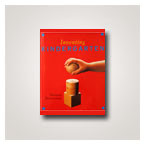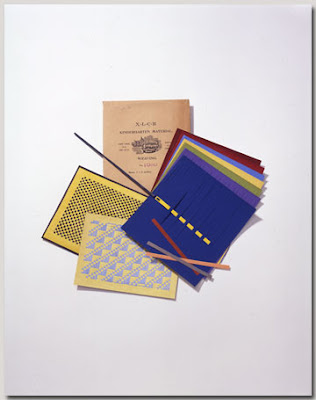Woven Beauty Forms: Paper Weaving
This is a photo (by Kiyoshi Togashi) of a simple paper weaving technique, known as the 14th Gift, Woven Beauty Forms, developed by Friedrick Froebel, and pictured in Inventing Kindergarten, a book by Norman Brosterman.
Friedrich Froebel [1782-1852] is best known as the inventor of the kindergarten system, an educational method used a while ago to teach children between 3-7 years old. “Inventing Kindergarten is the first comprehensive book about the origin of kindergarten, a revolutionary educational program for children that was created in the 1930s by charismatic German educator Friedrich Froebel. Froebel’s kindergarten was the most successful system for teaching children about art, design, mathematics, and natural history ever devised. Kindergarten changed the world, and this book tells the story.” – Diane Ravitch, author of The Troubled Crusade: American Education 1945-1980, and former secretary, U.S. Department of Education. See, Inventing Kindergarten, by Norman Brosterman.
In the 1840s, Froebel designed a number of geometric toys, he called "gifts," as a part of his educational system, some of which include sets of blocks, stick work, rings, net drawing exercises, paper weaving, slat work, joined slats, paper interlacing, and peas work.
Upon close inspection, and with some investigation, it can be argued that Froebel’s work was incredibly influential and important to the worlds of art and architecture. As examples, upon becoming familiar with Froebel’s Gifts, see the works of any of the following artists and architects, then decide for yourself if there is a connection:
Wassily Kandinsky
Paul Klee
Frank Lloyd Wright
Piet Mondrian
Georges Braque
Le Corbusier
Josef Albers
Buckminster Fuller
See more patterns. Look at William Morris, famous designer in history. See a contemporary example of woven beauty forms in Peggy Dembicer’s work featured on Flicker and in a recent article in Make Magazine.
Froebel’s Gifts can be purchased today from a variety of sources,
http://www.froebelusa.com
Froebel USA being just one.

Check out the book, Inventing Kindergarten, by Norman Brosterman. Photograph by Kiyoshi Togashi.

 Amy Leidtke
Amy Leidtke
